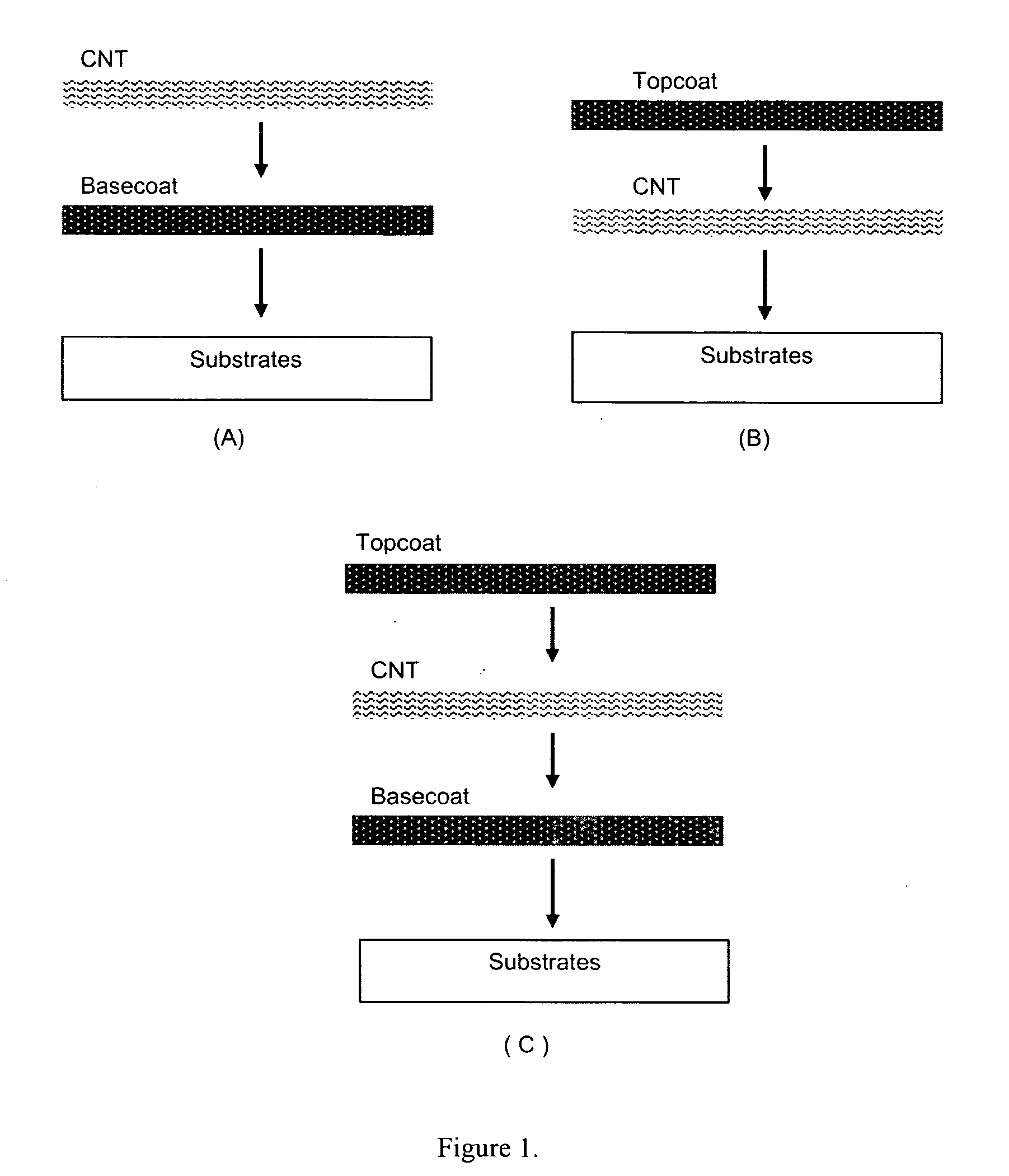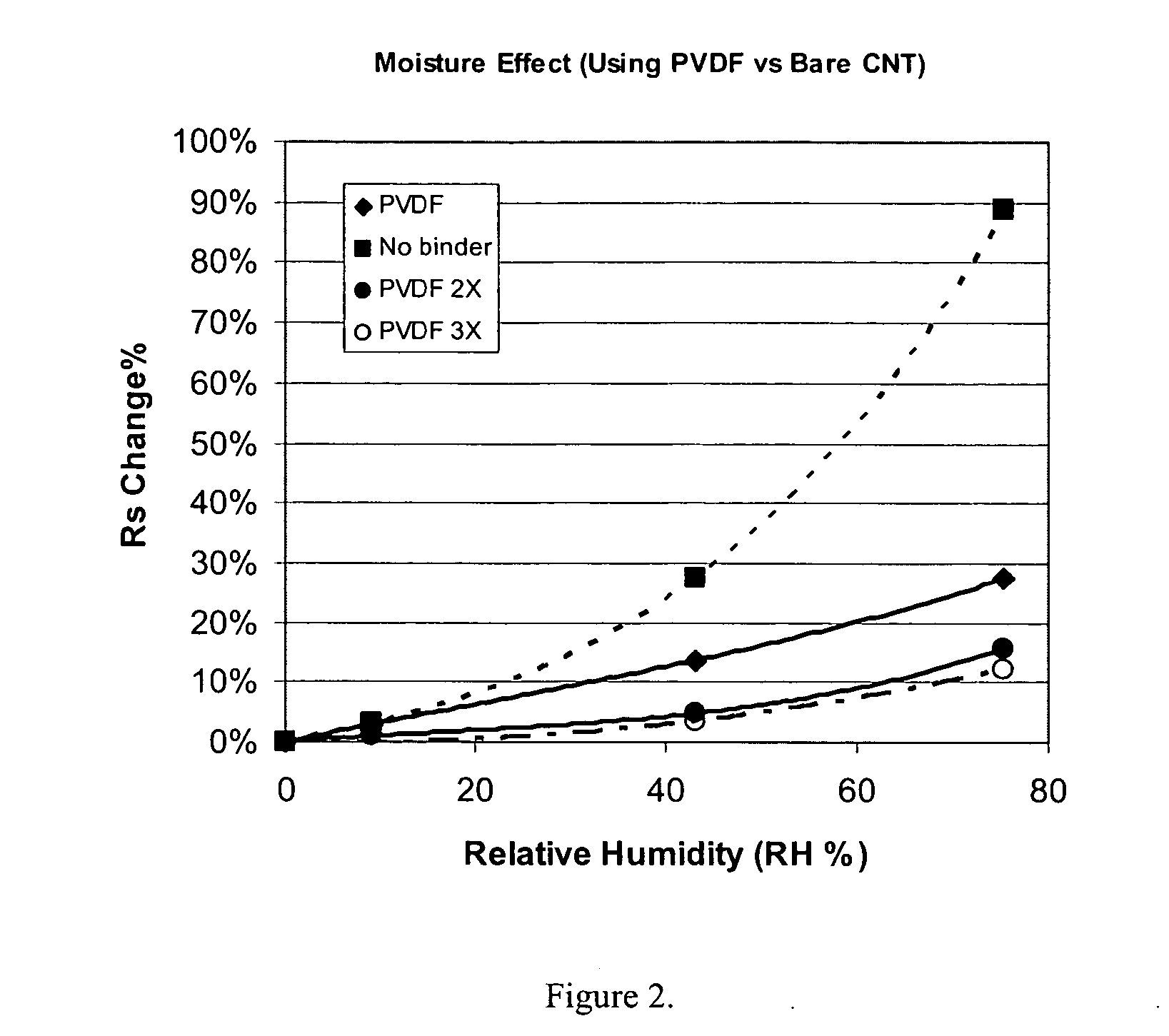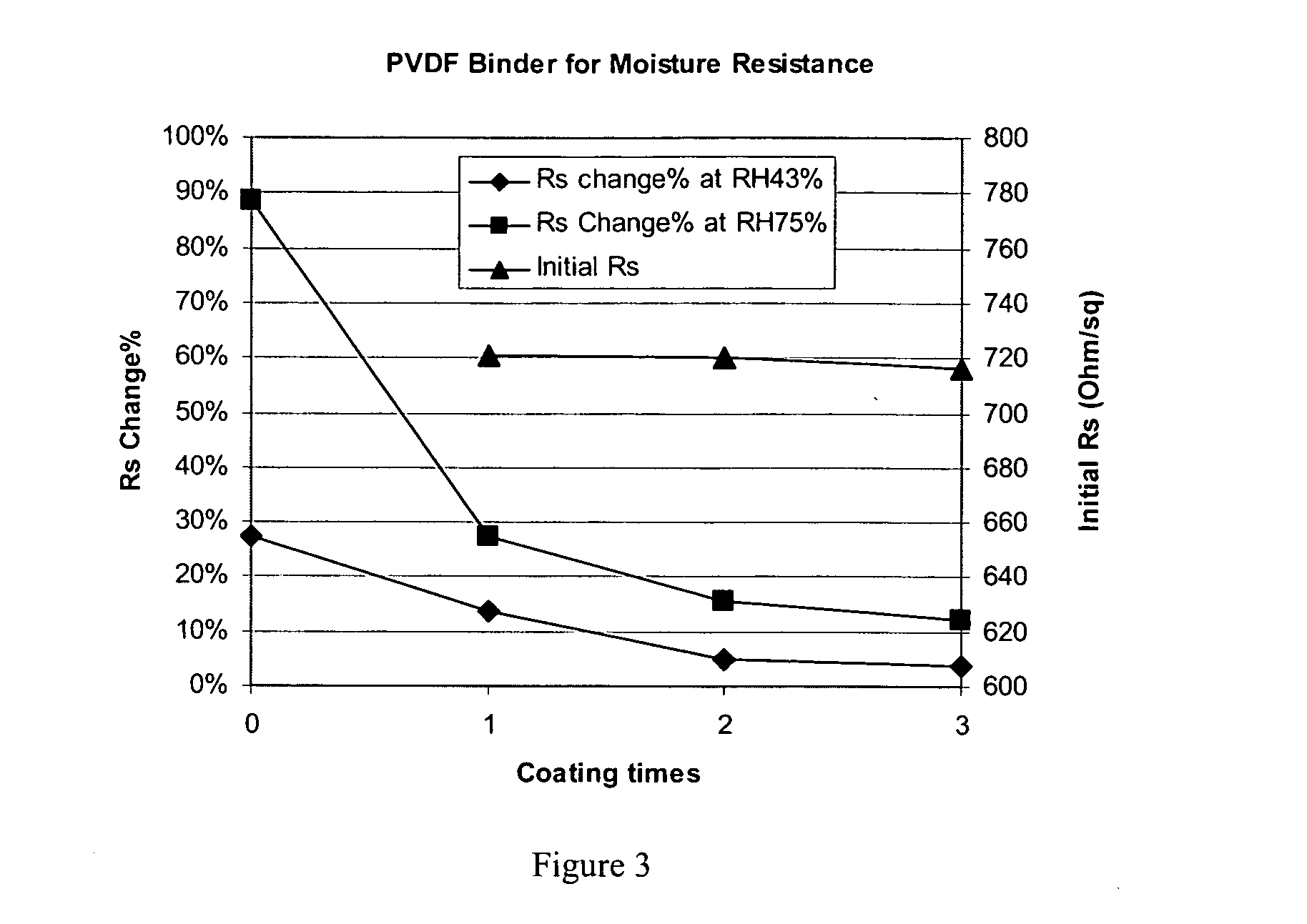Polymer binders for flexible and transparent conductive coatings containing carbon nanotubes
a technology of carbon nanotubes and polymer binders, which is applied in the direction of electrically conductive paints, coatings, transportation and packaging, etc., can solve the problems of poor abrasion resistance and flexibility of ito-based coatings and films, limited supply of expensive indiums, and limited polymer conductivity and optical transparency, etc., to achieve excellent flexibility, reduce optical transparency and surface conductivity, and improve the effect of abrasion resistan
- Summary
- Abstract
- Description
- Claims
- Application Information
AI Technical Summary
Benefits of technology
Problems solved by technology
Method used
Image
Examples
working examples
CNT / Substrate with Using Polymer Binders
working example # we 1
Working Example #WE 1
CNT / Glass with PVDF as the Binder (Topcoat)
[0112] By using the same ink used for the comparative examples, the sample of CNT / glass were made. It was then dip-coated with 1% of polyvinylidiene fluoride (PVDF) solution dissolved in N,N-dimethyl acetamide followed by drying, and then tested for moisture resistance in the same way as described. The sample was also coated with PVDF multiple times for better coating quality and higher thickness. The sample was tested each time after coating. The results are shown in FIG. 2, FIG. 3 and Table 2.
[0113] Initially the sample showed Rs of 630 Ω / □ at ambient conditions. Stable Rs values of the sample with 1×PVDF coating are 720 and 919 Ω / □, corresponding to RH 0 and 75%, respectively. The change in Rs from the dry state to RH 75% is 27.5%. After twice (2×) coating, stable Rs values are 720 and 833 Ω / □, corresponding to RH 0 and 75%, respectively. The change from the dry state to RH75% is 15.7%. After coating 3×, stable Rs ...
working example # we 2-5
Working Example #WE 2-5
CNT / Glass with More Binders (Topcoat)
[0116] Other working examples on glass substrate (#WE 2-5) are shown in Table 2 and Table 3. It can be seen that the polymer binders especially the polymer having higher hydrophobicity (e.g., fluoropolymers) give high moisture resistance to the transparent CNT network coating. The thermal resistance can be significantly improved by using polymer binders especially high temperature polymers and cross-linked polymer systems. The abrasion resistance is also significantly improved.
PUM
 Login to View More
Login to View More Abstract
Description
Claims
Application Information
 Login to View More
Login to View More - R&D
- Intellectual Property
- Life Sciences
- Materials
- Tech Scout
- Unparalleled Data Quality
- Higher Quality Content
- 60% Fewer Hallucinations
Browse by: Latest US Patents, China's latest patents, Technical Efficacy Thesaurus, Application Domain, Technology Topic, Popular Technical Reports.
© 2025 PatSnap. All rights reserved.Legal|Privacy policy|Modern Slavery Act Transparency Statement|Sitemap|About US| Contact US: help@patsnap.com



